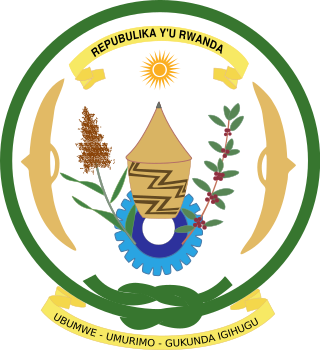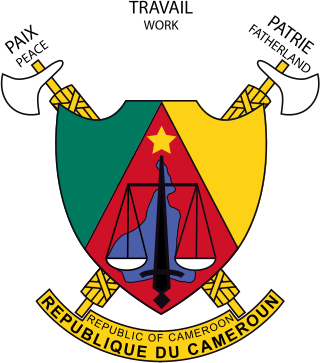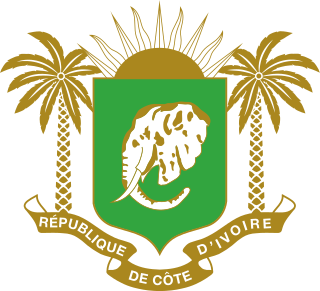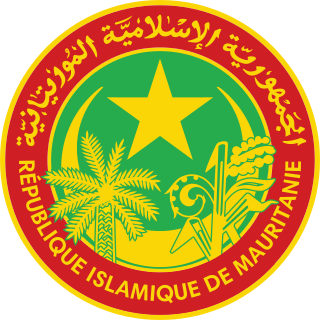
The United National Independence Party (UNIP) is a political party in Zambia. It governed the country from 1964 to 1991 under the socialist presidency of Kenneth Kaunda, and was the sole legal party in the country between 1973 and 1990. On 4 April 2021, Bishop Trevor Mwamba was elected President of UNIP.

Elections in Gabon take place within the framework of a presidential multi-party democracy with the Gabonese Democratic Party, in power since independence, as the dominant party. The President and National Assembly are directly elected, whilst the Senate is indirectly elected.

Elections in Niger take place within the framework of a semi-presidential system. The President and National Assembly are elected by the public, with elections organised by the Independent National Electoral Commission (CENI).

Elections in Rwanda are manipulated in various ways, which include banning opposition parties, arresting or assassinating critics, and electoral fraud. According to its constitution, Rwanda is a multi-party democracy with a presidential system. In practice, it functions as a one-party state ruled by the Rwandan Patriotic Front and its leader Paul Kagame. The President and majority of members of the Chamber of Deputies are directly elected, whilst the Senate is indirectly elected and partly appointed.

General elections were held in Zambia on 5 December 1973. They were the first elections held since the country was formally declared a one-party state in August, with the United National Independence Party (UNIP) as the only legally permitted party. UNIP leader Kenneth Kaunda was automatically elected to a third five-year term as President, and was confirmed in office via a referendum in which 88.8% of voters approved his candidacy. UNIP also won all 125 seats in the National Assembly. Voter turnout was 39% of the 1,746,107 registered voters for the presidential election, and 33% for the National Assembly election.

General elections were held in Zambia on 12 December 1978. At the time, the country was a one-party state with the United National Independence Party (UNIP) as the sole legal party. UNIP leader Kenneth Kaunda was automatically elected to a fourth five-year term as President, with 80.7% of voters voting to confirm him in office. UNIP also won all 125 seats in the National Assembly. Voter turnout was around 65% in the parliamentary election, but 66.7% in the presidential election.

General elections were held in Zambia on 27 October 1983. At the time, the country was a one-party state, with the United National Independence Party (UNIP) as the only legally permitted party. Its leader, Kenneth Kaunda was automatically re-elected for a fifth term as President, and was confirmed in office with over 95% of the vote. UNIP also won all 125 seats in the National Assembly. Voter turnout was around 63% in the parliamentary election, but 65.5% in the presidential election.

General elections were held in Zambia on 26 October 1988. At the time, the country was a one-party state with the United National Independence Party (UNIP) as the sole legal party. UNIP leader Kenneth Kaunda was automatically re-elected for a sixth five-year term as President with 95.5% of the vote, whilst UNIP also won all 125 seats in the National Assembly. Voter turnout was around 60% in the parliamentary elections, but 58.8% in the presidential elections.
General elections were held for the first time in the newly formed Union of Tanzania in September 1965. The country had also just become a one-party state, with the Tanganyika African National Union as the sole legal party on the mainland, and the Afro-Shirazi Party was the only party in Zanzibar. For the National Assembly election there were two candidates from the same party in each constituency, whilst the presidential election was effectively a referendum on TANU leader Julius Nyerere's candidacy.
General elections were held in Tanzania on 30 October 1970. The country was a one-party state at the time, with the Tanganyika African National Union as the sole legal party on the mainland, and the Afro-Shirazi Party was the only party in Zanzibar. For the National Assembly election there were two candidates from the same party in each of the 106 constituencies, whilst the presidential election was effectively a referendum on TANU leader Julius Nyerere's candidacy.
General elections were held in Tanzania on 26 October 1975. The country was a one-party state at the time, with the Tanganyika African National Union as the sole legal party on the mainland, and the Afro-Shirazi Party was the only party in Zanzibar. For the National Assembly election there were two candidates from the same party in each of the constituencies, whilst the presidential election was effectively a referendum on TANU leader Julius Nyerere's candidacy.
General elections were held in Tanzania on 27 October 1985. The country was a one-party state at the time, with the Chama Cha Mapinduzi as the sole legal party. For the National Assembly election there were two candidates from the same party in each constituency, whilst the presidential election was effectively a referendum on CCM's candidate Ali Hassan Mwinyi, who succeeded Julius Nyerere as president.
General elections were held in Tanzania on 28 October 1990. The country was a one-party state at the time, with the Chama Cha Mapinduzi as the sole legal party. For the National Assembly election there were two candidates from the same party in each constituencies, whilst the presidential election was effectively a referendum on CCM leader Ali Hassan Mwinyi's candidacy.

General elections were held in Gabon on 25 February 1973 to elect a President and the National Assembly. The country was a one-party state at the time, with the Gabonese Democratic Party (PDG) as the sole legal party. PDG leader and incumbent president Omar Bongo was the only candidate in the presidential election, and was elected unopposed. In the National Assembly election the PDG put forward a list of 70 candidates for the 70 seats in the expanded Assembly. Voter turnout was allegedly 97.8%.

General elections were held in Cameroon on 24 April 1988 to elect a President and National Assembly. The country was a one-party state at the time, with the Cameroon People's Democratic Movement as the sole legal party. Its leader, incumbent Paul Biya was the only candidate in the presidential election, and was re-elected unopposed.

Presidential elections were held in Ivory Coast on 12 October 1980, the first time a presidential election had been held separately to National Assembly elections. At the time the country was a one-party state with the Democratic Party of Ivory Coast – African Democratic Rally as the sole legal party. Its leader, long-term President Félix Houphouët-Boigny was the only candidate, and was re-elected unopposed. Voter turnout was 82.3%.

General elections were held in Senegal on 28 January 1973 to elect a President and National Assembly. At the time the country was a one-party state, with the Senegalese Progressive Union (UPS) as the sole legal party, As a result, its leader, Léopold Sédar Senghor, was the only candidate in the presidential election and was re-elected unopposed. In the National Assembly election, voters were presented with a list of 100 UPS candidates to vote for. Voter turnout was 97%.

General elections were held in Mauritania on 8 August 1971 to elect a President and National Assembly, the first time the two elections had been held together. At the time, the country was a one-party state with the Mauritanian People's Party (PPM) as the sole legal party. Its leader, incumbent President Moktar Ould Daddah, was the only candidate in the presidential election, and was re-elected unopposed to a third term in office, whilst the PPM won all 50 seats in the National Assembly election. Voter turnout for the parliamentary election was reported to be 95.6%.

The Chama Cha Mapinduzi is the dominant ruling party in Tanzania and the second longest-ruling party in Africa, only after the True Whig Party of Liberia. It was formed in 1977, following the merger of the Tanganyika African National Union (TANU) and the Afro-Shirazi Party (ASP), which were the sole operating parties in mainland Tanzania and the semi-autonomous islands of Zanzibar, respectively.














